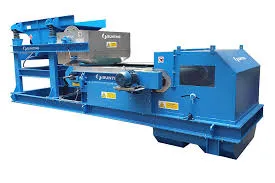

nov. . 12, 2024 17:33 Back to list
How are Metals Sorted in Recycling Plants?
Recycling has become an essential component of sustainable living, aiming to reduce waste and conserve natural resources. Among various materials suitable for recycling, metals play a crucial role due to their durability and ability to be reused multiple times without degradation in quality. However, the effectiveness of metal recycling depends significantly on the sorting process employed in recycling plants. This article aims to explore how metals are sorted in recycling facilities, highlighting the methods and technologies that enable efficient metal recovery.
Overview of the Metal Recycling Process
The recycling process generally starts with the collection of metallic materials from various sources, including households, industrial facilities, construction sites, and more. Once collected, these materials are transported to recycling plants where the sorting process begins. The goal of sorting is to separate different types of metals, such as ferrous (containing iron) and non-ferrous metals (like aluminum, copper, and stainless steel), as well as to remove contaminants and non-metallic materials.
Initial Sorting
At the recycling plant, the first step in sorting metal materials is often manual labor. Workers stand at conveyor belts to identify and remove items that do not belong in the metal stream, such as plastics, wood, and hazardous materials. While this manual process is critical, it can be inefficient and labor-intensive. Thus, recycling plants increasingly implement automated technologies to enhance the effectiveness and speed of the sorting process.
Magnetic Separation
One of the primary methods used to sort metals in recycling plants is magnetic separation. This technique is particularly effective for separating ferrous metals from non-ferrous materials. A magnetic separator is employed, which consists of powerful magnets that capture ferrous metals as they pass along a conveyor. The remaining materials, now free of iron-containing metals, continue along the sorting line for further processing.
Eddy Current Separation

For non-ferrous metals, recycling plants frequently employ a technology called eddy current separation. This system creates a strong magnetic field that induces electrical currents in non-ferrous metals as they pass through. These currents generate opposing magnetic fields, causing the non-ferrous metals to propel away from the conveyor belt, effectively separating them from other materials. This method is particularly useful for metals like aluminum and copper, which can easily be separated from other waste streams.
Optical Sorting
As technology has progressed, more advanced sorting methods have been developed, such as optical sorting. This system uses cameras and sensors to identify different types of metals based on their color and shape. When a specific metal type is detected, pneumatic ejectors blast the targeted metals out of the waste stream, ensuring that they are sorted accurately. Optical sorting increases the efficiency and accuracy of the metal separation process, significantly reducing contamination in the final sorted streams.
Density Separation
Another method commonly used is density separation, which utilizes the principle that different metals have different densities. Materials are typically introduced into a liquid medium where metals can either sink or float. This method allows for the separation of various metal types based on their physical properties, ensuring that heavier metals are separated from lighter materials effectively.
Final Processing and Quality Control
After sorting, the metals undergo further processing to prepare them for resale. This may involve shredding, baling, and compaction to create transportable forms. A crucial stage in the recycling process is quality control. Sorting personnel or automated systems inspect the sorted metals to ensure that there are minimal contaminants and that the metals are of suitable grade for recycling.
Conclusion
The sorting of metals in recycling plants is a vital aspect of the recycling process that enhances resource recovery and promotes sustainability. Through a combination of manual sorting, magnetic separation, eddy current technology, optical sorting, and density separation, recycling facilities can efficiently separate and process various metals. As technology continues to evolve, these methods are becoming increasingly sophisticated, allowing for higher recovery rates and contributing to a more efficient circular economy. Ultimately, effective metal sorting not only conserves resources but also reduces environmental impact, playing a key role in our efforts to create a sustainable future.
Latest news
Troubleshooting Common Eddy Separator Problems
NewsJul.04,2025
The Role of Metal Recycling Plants in Circular Economy
NewsJul.04,2025
The Impact of Recycling Line Pickers on Waste Management Costs
NewsJul.04,2025
Safety Features Every Metal Shredder Should Have
NewsJul.04,2025
How Industrial Shredders Improve Waste Management Systems
NewsJul.04,2025
How Cable Granulators Contribute to Sustainable Recycling
NewsJul.04,2025